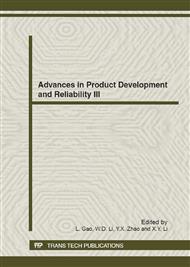p.251
p.256
p.262
p.268
p.274
p.280
p.286
p.292
p.298
Fatigue Crack Growth Law Covering Threshold and Fracture Toughness for Railway LZ50 Axle Steel
Abstract:
Long fatigue crack growth rate (FCGR) model covering the range from threshold to fracture toughness is investigated through a series of experiments on the fatigue crack growth behaviour during nearby the threshold district of stage I, steady growth stage II, and the toughness of railway LZ50 axle steel. It reveals that test data in stage II can be reasonably described by employing a statistical distribution for the FCGR data at a given stress intensity factor range level. While the test data nearby the threshold district can be appropriately characterized using a statistical distribution for the factor range data at a given FCGR level and the case is similarly for the test toughness data. Therefore, the model is constructed using the test data in stage II under a control of the statistical parameters of threshold and toughness data on a principle of concurrent probabilities. Availability is indicated by the modeled result for the present material.
Info:
Periodical:
Pages:
280-285
Citation:
Online since:
June 2012
Authors:
Keywords:
Price:
Сopyright:
© 2012 Trans Tech Publications Ltd. All Rights Reserved
Share:
Citation:


